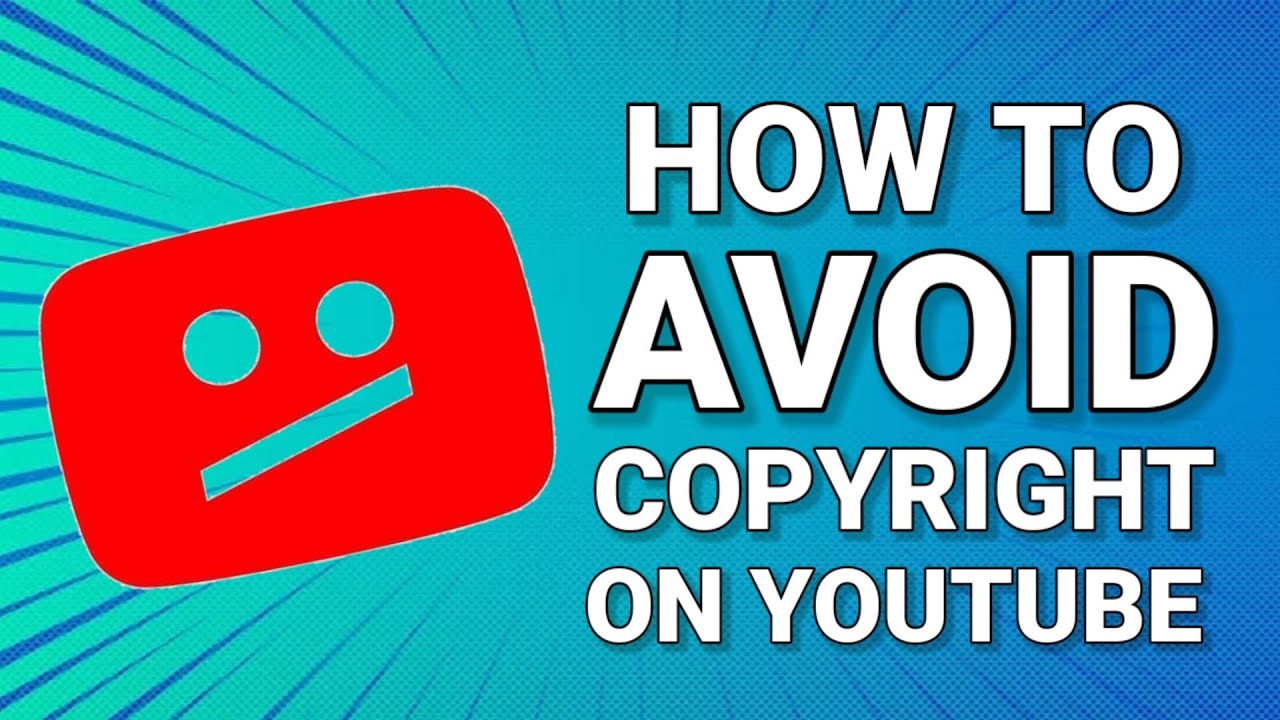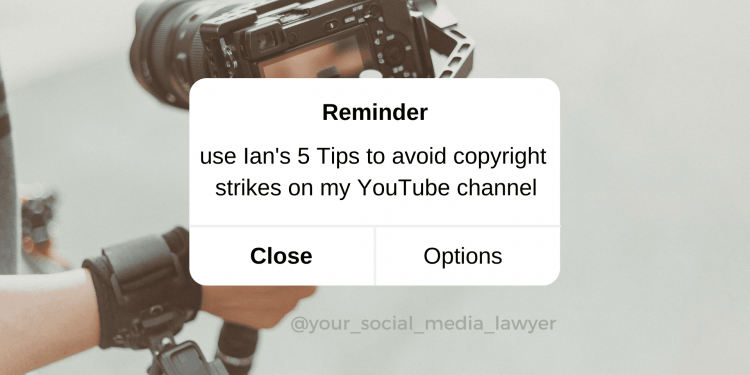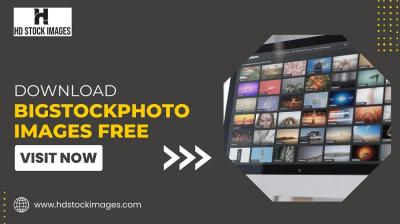Creating content on YouTube can be exciting, but navigating copyright laws can be tricky. Whether you’re a seasoned creator or just starting out, understanding the basics of copyright will help you protect your work and avoid costly disputes. Let’s dive into the essentials!
Understanding Copyright Basics for YouTube

Copyright is a legal protection that gives creators exclusive rights to their original works. This includes videos, music, artwork, and even scripts. When you upload content to YouTube, it’s automatically protected by copyright, but there are some key concepts you should grasp:
- Original Work: Your content must be original. If you create a video featuring your ideas, your footage, and your edits, you own the rights to that video.
- Fair Use: This legal doctrine allows limited use of copyrighted material without permission. However, it’s a gray area. For example, using a short clip for commentary or education might qualify as fair use, but using a full song or long clip often does not.
- Creative Commons: Some creators allow their work to be used under Creative Commons licenses. Always check the specifics—some licenses require attribution or are restricted to non-commercial use.
To protect your content on YouTube, consider these tips:
- Create Original Content: Always strive to make unique videos. If you’re using others’ content, get explicit permission or use content that is royalty-free.
- Document Everything: Keep records of your original work, including drafts, scripts, and images. This documentation can be invaluable if disputes arise.
- Understand YouTube's Policies: Familiarize yourself with YouTube’s copyright policies. They have a dedicated section covering copyright strikes and how to handle them.
By keeping these fundamentals in mind, you can significantly reduce the risk of copyright issues on your channel.
Also Read This: How to Watch the Lions Game on YouTube TV: A Viewer’s Guide
Common Copyright Issues Creators Face

Copyright issues can crop up in many ways, and being aware of these can help you navigate challenges effectively. Here are some of the most common problems creators encounter:
- Copyright Strikes: If you use copyrighted content without permission, the copyright owner can issue a copyright strike against your channel. Accumulating three strikes can lead to your channel being terminated.
- Content ID Matches: YouTube uses a system called Content ID that scans uploaded videos against a database of copyrighted materials. If it finds a match, the copyright owner can choose to block the video, monetize it, or track its viewership.
- Claims on Music: This is particularly common in vlogs and gaming videos. Many songs are protected, and using them without a license often results in claims, leading to muted audio or demonetization.
To navigate these challenges, consider the following strategies:
- Use Royalty-Free Music: Platforms like Epidemic Sound and Artlist offer music that can be used without copyright issues. Just make sure to read their licensing agreements!
- Be Cautious with Clips: When using clips from movies or shows, limit their length and add commentary to strengthen your fair use argument. However, there’s no guarantee it will be accepted.
- Educate Yourself: Stay updated on copyright laws and YouTube’s policies. Join forums or take courses that focus on copyright for creators.
By being proactive and informed, you can sidestep many of the common copyright pitfalls and keep your channel thriving.
Also Read This: How to Add Bally Sports to YouTube TV for Regional Coverage
3. How to Use Copyright-Free and Creative Commons Content

When diving into the vast ocean of YouTube, you’ll often find yourself in need of music, images, or video clips that won’t land you in copyright trouble. Thankfully, there are treasure troves of copyright-free and Creative Commons content available! Let’s explore how to navigate these resources effectively.
Understanding Copyright-Free Content
Copyright-free content is just that—material that is free to use without the worry of infringing on someone else’s rights. This could include anything from public domain works to original content released under specific licenses that allow for free usage.
Creative Commons Licenses
Creative Commons (CC) is a fantastic way to find content you can legally use. Here’s a breakdown of the types of CC licenses:
- CC BY: You can use the work even commercially, as long as you give appropriate credit.
- CC BY-SA: Similar to CC BY, but you must share any derivatives under the same license.
- CC BY-ND: You can use the work for commercial purposes, but it must remain unchanged.
- CC BY-NC: Use is allowed for non-commercial purposes, with credit.
- CC BY-NC-SA: Non-commercial use is allowed, and derivatives must be shared alike.
- CC BY-NC-ND: The most restrictive—allowing use only with credit, no derivatives, and non-commercially.
To find this content, visit sites like:
- Flickr for images
- SoundCloud for music
- Videvo for video clips
Attribution is Key!
When using Creative Commons content, always provide proper attribution. This not only respects the creator’s rights but also protects you from potential copyright claims. A simple line in your video description can do the trick!
Also Read This: Who Is the Most Famous Roblox YouTuber
4. Creating Original Content to Avoid Copyright Claims
Now that we’ve covered how to use existing content, let’s focus on the golden rule of YouTube: creating your own original content. This is, without a doubt, the best way to steer clear of copyright issues!
Finding Your Unique Voice
Original content doesn’t mean reinventing the wheel; it means infusing your unique perspective into your work. Whether it’s vlogs, tutorials, or documentaries, your personal touch makes all the difference. For instance, instead of creating a typical travel vlog, add a twist by focusing on local cuisine or hidden gems in each destination.
Tips for Original Content Creation
- Brainstorm Ideas: List down topics you’re passionate about. This could be anything from gaming to cooking.
- Research Trends: Use tools like Google Trends and social media to see what’s popular. Tailor these trends into your own style.
- Engage with Your Audience: Ask your viewers what they’d like to see. This not only helps you plan content but also builds community.
- Collaborate: Teaming up with other creators can spark fresh ideas and lead to exciting projects.
Invest in Your Skills
Consider honing your skills in areas like video editing, storytelling, or graphic design. There are countless online courses available that can help you level up your content creation game. The more proficient you become, the more original and appealing your content will be!
In conclusion, whether it’s leveraging copyright-free resources or crafting your unique creations, safeguarding your content on YouTube is entirely achievable. Embrace your creativity, respect the rights of others, and watch your channel flourish!
Also Read This: Debunking the Rumors: Will YouTube Shut Down Anytime Soon?
5. How to Properly Attribute Other Creators' Work
Attributing the work of other creators is not just about following the rules; it’s about respecting their contributions and fostering a positive community. When you use someone else's content, whether it’s a clip from a video, a piece of music, or even images, giving proper credit is essential.
Here are some tips on how to effectively attribute:
- Be Clear and Specific: When you attribute, provide the creator's name and a link to their original work. For example, if you use a music track from a creator, mention their name and link to the track in your video description.
- Follow Licensing Guidelines: Different creators have different rules about how their work can be used. If the creator has specified a particular way to attribute their work (like using a specific phrase or format), make sure to follow it.
- Use a Visual Cue: In your video, consider adding a text overlay that credits the creator. This can reinforce the acknowledgment and show viewers where they can find the original content.
Here’s an example of a solid attribution:
“Music by John Doe – used under Creative Commons License (CC BY 4.0).”
Remember, proper attribution not only protects you legally but also builds goodwill with other creators. They are more likely to collaborate or support you if they see you respect their work. Plus, your viewers will appreciate the transparency!
Also Read This: Is Airy YouTube Downloader Safe
6. Using YouTube's Content ID System Effectively
YouTube's Content ID system is a powerful tool for creators wanting to protect their content and avoid copyright issues. It helps identify and manage copyrighted material in your videos, but knowing how to use it effectively is key.
Here are some strategies to leverage Content ID:
- Understand How Content ID Works: Content ID scans uploaded videos against a database of copyrighted material. If it finds a match, it can block your video, monetize it on behalf of the copyright owner, or track its viewership. Familiarize yourself with these outcomes so you’re prepared.
- Use Original Content: Whenever possible, create your own videos, music, and graphics. This minimizes the chances of your content being flagged and strengthens your brand identity.
- Check for Claims: Regularly monitor your account for any Content ID claims. If you receive a claim, review it carefully. Sometimes, claims can be disputed if you believe your use falls under fair use.
Additionally, consider this:
| Outcome | Description |
|---|---|
| Blocked | Your video cannot be viewed until the claim is resolved. |
| Monetized | The copyright owner earns revenue from ads on your video. |
| Tracked | The copyright owner can see how your video is performing. |
By understanding and effectively using YouTube's Content ID system, you can navigate copyright issues with confidence. It empowers you to protect your creations while respecting the rights of others. Plus, it gives you insights into how your content interacts with the broader YouTube ecosystem!
Also Read This: How to Add a YouTube Video to Your Instagram Story? A Step-by-Step Guide for Sharing YouTube Content on Instagram
7. Steps to Take if You Receive a Copyright Strike
Receiving a copyright strike on YouTube can feel like a punch in the gut, especially if you’ve put in a lot of effort to create your content. But don’t panic! There are steps you can take to address the situation and protect your channel:
- Understand the Strike: First things first, read the email or notification from YouTube carefully. It will explain why you received the strike and who filed the complaint. This information is crucial for your next steps.
- Review the Content: Take a close look at the video in question. Determine whether you actually used copyrighted material or if your use might be considered fair use. If it includes music, video clips, or images that you didn’t create, that’s likely the issue.
- Assess Your Options: You typically have three options:
- Remove the content: If you can take down the video, do it. This will prevent further issues.
- File a Counter-Notice: If you believe your content was mistakenly flagged, you can file a counter-notice. Just be aware that this can lead to legal consequences if the claimant decides to pursue it.
- Communicate with the Claimant: Sometimes, reaching out to the rights holder can resolve the issue. They may agree to lift the strike or allow you to use the content with proper attribution.
- Learn and Adjust: Take this experience as a learning opportunity. Research copyright laws and understanding fair use better so that it doesn’t happen again. Adjust your content creation strategies accordingly.
- Stay Calm and Keep Creating: A copyright strike is not the end of the world! Many creators have faced similar issues and bounced back stronger. Focus on creating fresh content and engaging with your audience.
Remember, you have a grace period to resolve the issue. Stay proactive, and you’ll navigate this challenge effectively!
8. Resources for Learning More About Copyright on YouTube
If you want to dive deeper into copyright and protect your content on YouTube, there are excellent resources available to help you understand the landscape:
- YouTube's Copyright School: This is a fantastic starting point. YouTube offers a free online course that walks you through the basics of copyright, fair use, and how to avoid strikes.
- The U.S. Copyright Office: Their website provides detailed information about copyright laws, how they apply to online content, and what to do if you believe your work has been infringed.
- Creative Commons: Explore Creative Commons licenses if you’re looking for content you can legally use in your videos. Their site explains how to use these licenses correctly.
- Legal Resources for Creators: Websites like Nolo and LegalZoom offer articles and advice on copyright issues specifically tailored for content creators.
- YouTube Creator Academy: This is another treasure trove of information, covering everything from copyright basics to advanced strategies for protecting your work.
By utilizing these resources, you can empower yourself with knowledge and strategies to navigate copyright challenges like a pro. The more you know, the better you can protect your creative endeavors!
 admin
admin








